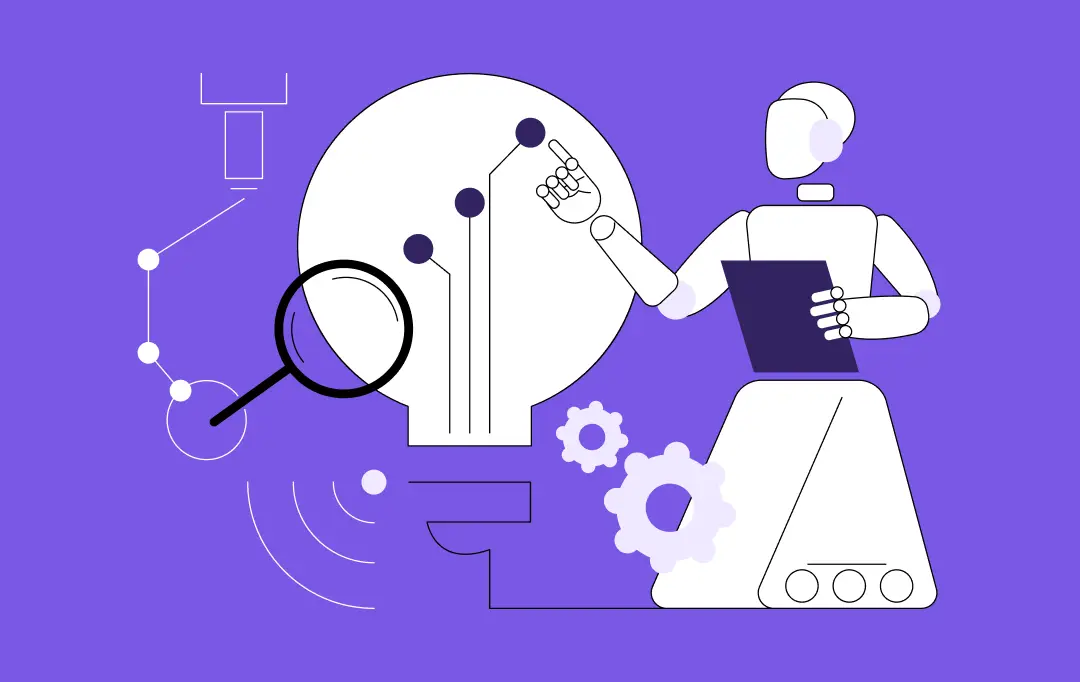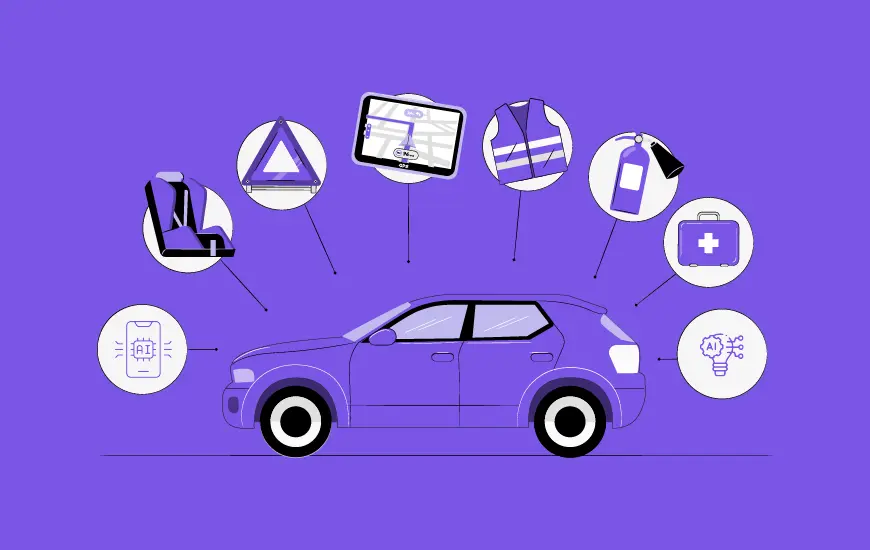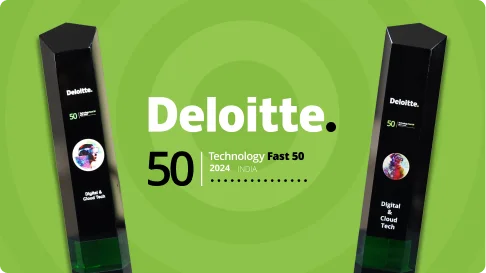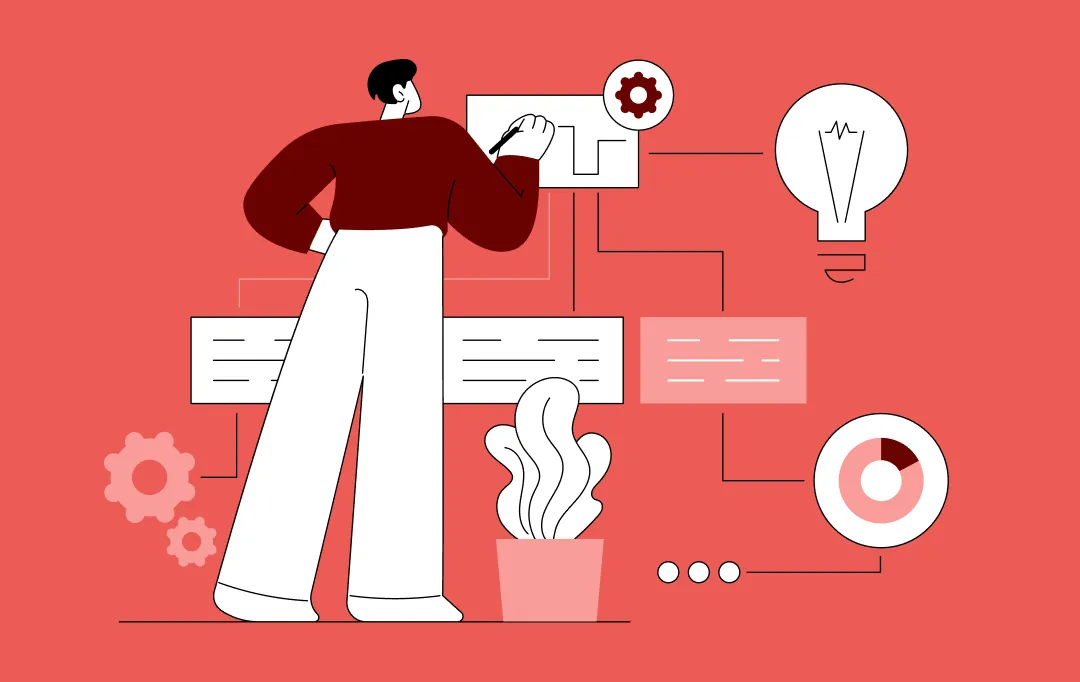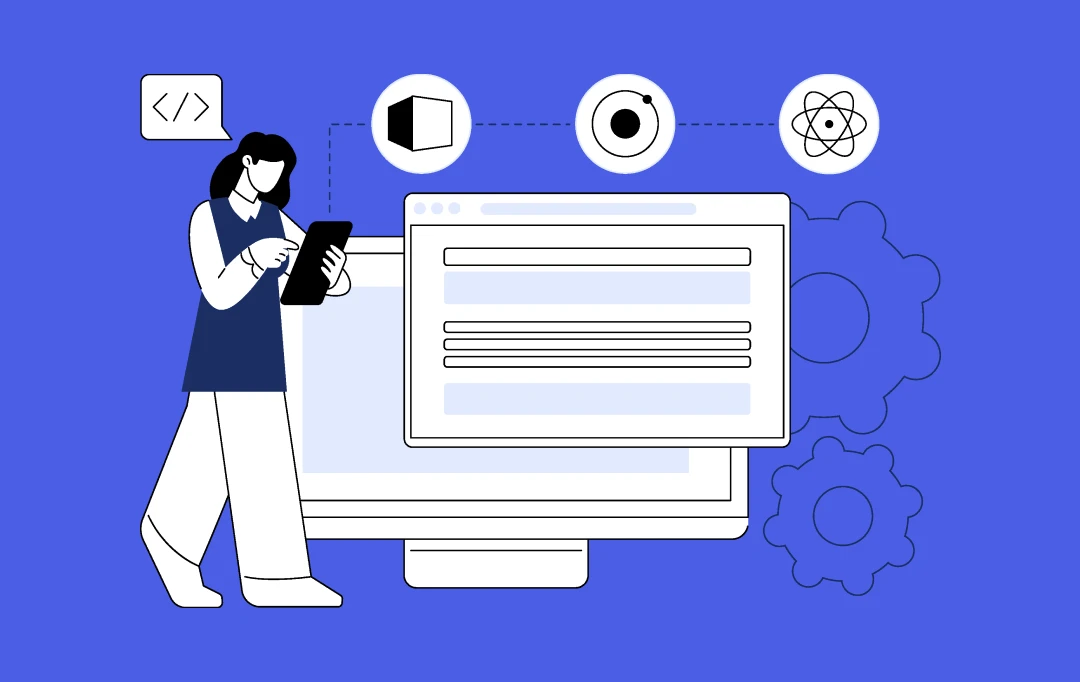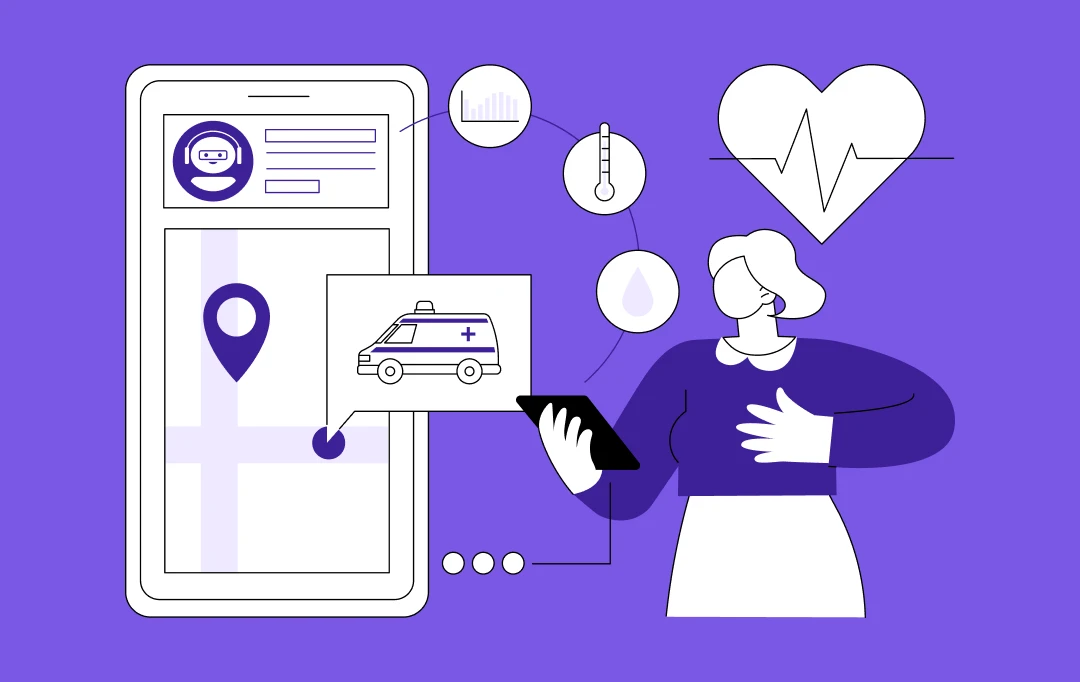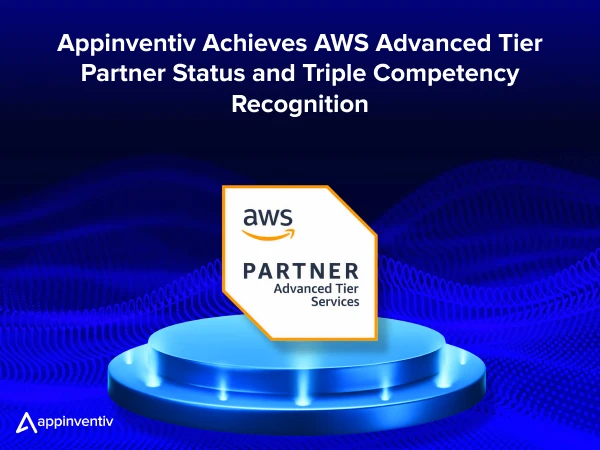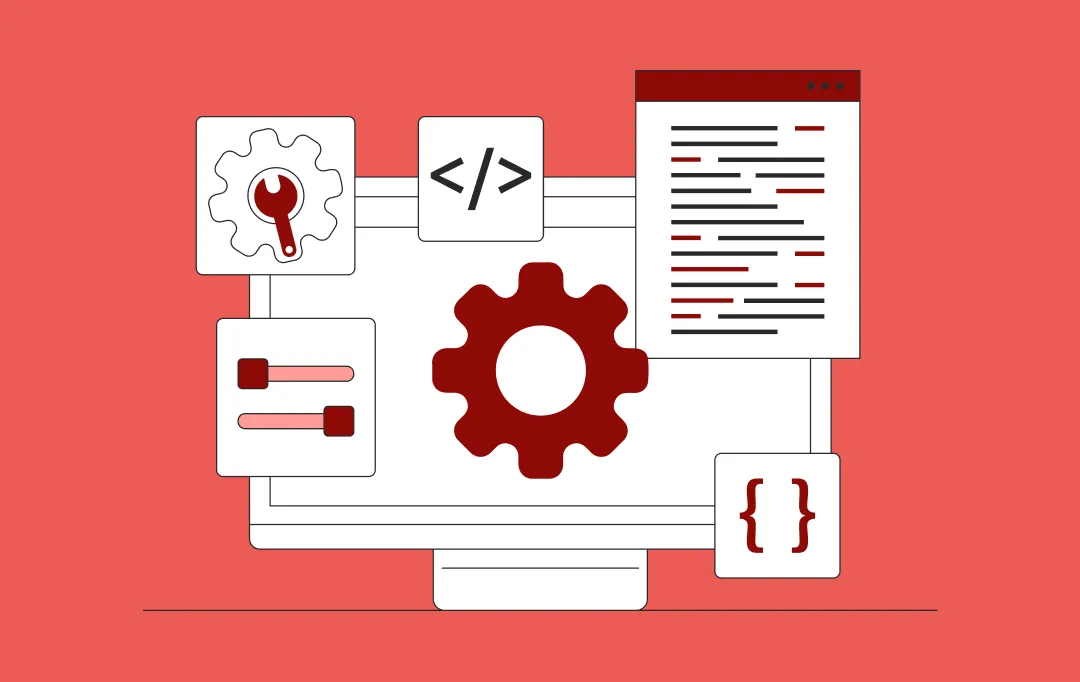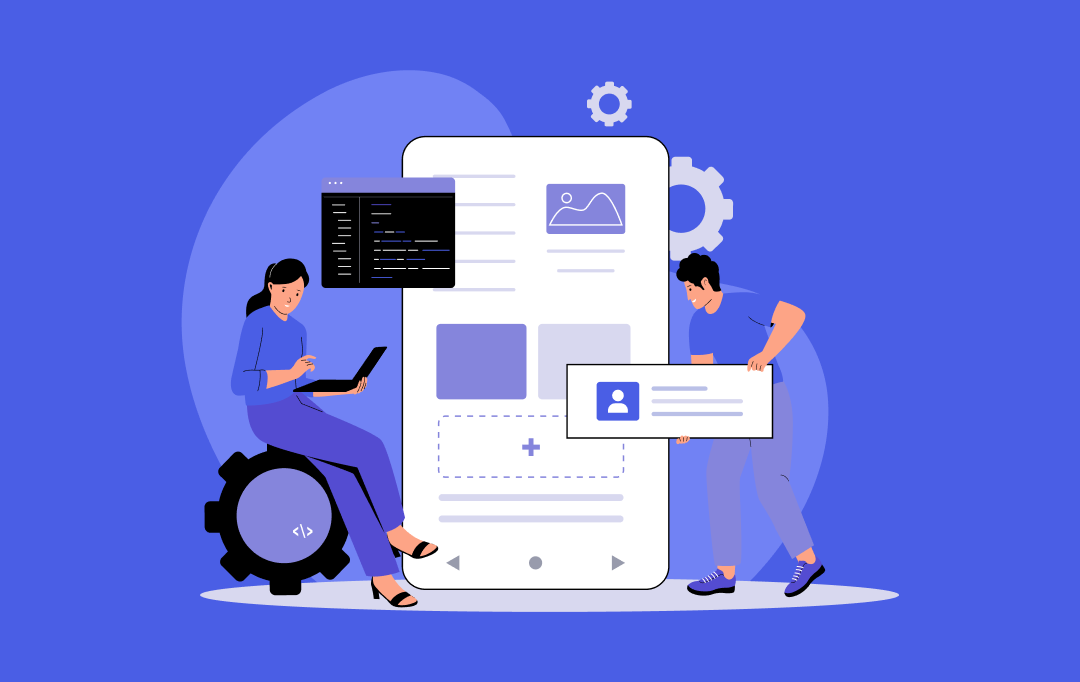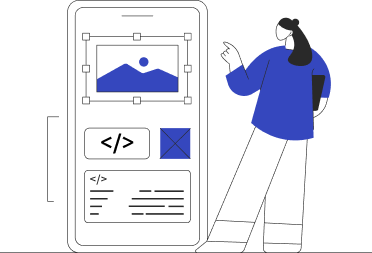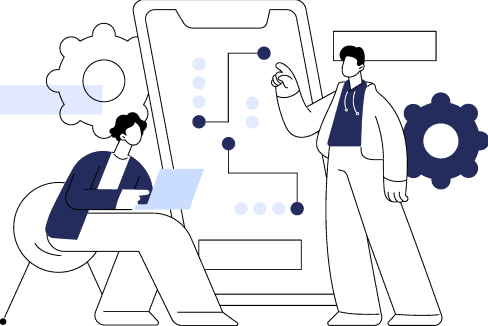- Step-by-Step Mobile App Development Process for Dutch Startups and Enterprises
- Step 1: Define the Vision and Validate the Idea
- Step 2: Plan a Strategy That Works
- Step 3: Design the UI/UX for Users, Not Screens
- Step 4: Pick the Right Tech Stack & Development Approach
- Step 5: Start Building and Integrating
- Step 6: Test Everything, Especially Security
- Step 7: Launch, Learn, and Improve
- Step 8: Maintain, Evolve, and Scale
- Features of a Mobile App for Dutch Startups and Enterprises
- Must Have Features for Mobile Apps in the Netherlands
- 1. Strong Data Protection and GDPR Readiness
- 2. Dutch and English Language Support
- 3. iDEAL Payments
- 4. Clean, Simple Personalization
- 5. Location Based Features
- 6. Useful Push Notifications
- 7. Basic Offline Access
- Advanced Features for Dutch Startups and Enterprises
- 1. Sustainability Touchpoints
- 2. Integration with Dutch Transport and Logistics Systems
- 3. Smooth Cross Platform Support
- 4. Analytics for Smart Decisions
- 6. AI Based Personalization
- Estimated Cost and Timeline of Mobile App Development in the Netherlands
- Mobile App Development Cost and Timeline in the Netherlands
- Key Cost & Time Drivers
- How to Build Mobile Apps for Dutch Businesses: Potential Challenges and Their Solutions
- Challenge 1: Staying Compliant with Data and Privacy Laws
- Challenge 2: Scaling Smoothly as the Business Grows
- Challenge 3: Competing in a Crowded App Market
- Key Benefits of Mobile Apps for Dutch Startups and Enterprises
- 1. Deeper Customer Connections
- 2. Simpler Operations, Lower Costs
- 3. Smarter, Real-Time Decisions
- 4. Stronger Customer Loyalty
- 5. A Clear Path to Digital Growth
- What's Hot in App Development Right Now: Emerging Tech Trends for Dutch Businesses
- AI Makes Apps Think
- ML Gets Creepy Good at Predictions
- 5G Finally Lives Up to the Hype
- AR and VR Stop Being Gimmicks
- Blockchain Does Something Useful
- Cloud Services Run Everything
- How Appinventiv Can Help Dutch Startups and Enterprises Build Secure & Scalable Mobile Apps
- FAQs
Key takeaways:
- The Netherlands’ mobile market is booming, with over 138% mobile penetration. This presents a lucrative opportunity for Dutch startups and enterprises to build secure and scalable apps.
- Following a structured mobile app development process in the Netherlands helps businesses reduce costs, ensure compliance, and accelerate go-to-market timelines.
- The costs for custom mobile application in the Netherlands typically range between $40,000 and $400,000 (around €37,000–€370,000).
- With 300+ projects delivered across Europe and 97% client satisfaction, Appinventiv is your trusted tech partner to build high-performing mobile apps.
The Netherlands has become one of Europe’s most active mobile markets, where technology quietly powers everyday life. As of 2025, the nation boasts 25.3 million active mobile connections, amounting to 138% of its population (Datareportal, 2025). This means most people here own more than one device for shopping, managing finances, or connecting with services. This is an intricate testament to how deeply mobility intertwines with daily life.
This digital lifestyle is backed by world-class infrastructure. The Netherlands ranks second globally for online connectivity, supported by extensive broadband and fiber networks that allow smooth, high-speed app performance. With nearly 10,000 Dutch apps listed on Google Play and each seeing an average of 351,000 downloads, the competition is high, but so is the opportunity.
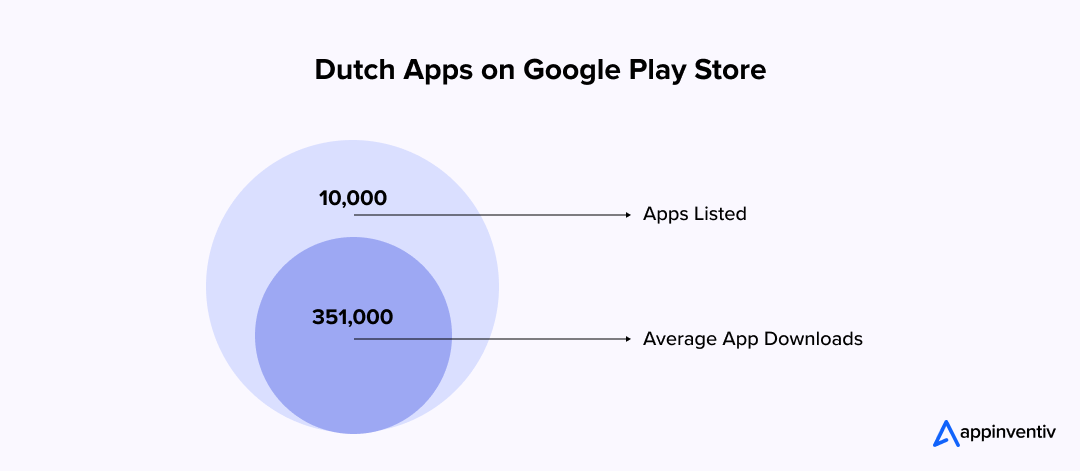
Whether it’s fintech firms improving payments through iDEAL, healthtech startups digitizing care, or logistics platforms modernizing Europe’s busiest ports, mobile app development in the Netherlands presents lucrative opportunities for all sizes of businesses.
In short, mobile adoption here isn’t just high; it’s habitual. For Dutch startups and enterprises, creating an app is no longer a future plan, it’s a competitive necessity. Those who are unsure how to build a secure application that can scale with time and technology, this blog is a roadmap. In this mobile app development guide, you will get a step-by-step approach to build high-performing mobile apps tailored to the country’s thriving digital ecosystem.
The Netherlands is already mobile-first. Let’s help your business match that momentum.
Step-by-Step Mobile App Development Process for Dutch Startups and Enterprises
Turning an app idea into a working product is both an art and a process. In the Netherlands, where mobile usage is part of everyday life, businesses can’t rely on intuition alone for app development procedure; they need a proven structure.
If you are still figuring out how to build mobile apps that are secure and scalable, this section is a must read for you. Here we will walk you through the mobile app development lifecycle in the Netherlands that startups and enterprises follow to move from concept to market-ready success.

Step 1: Define the Vision and Validate the Idea
Every great app begins with clarity. Before thinking about code or design, focus on why your app should exist. Maybe you’re a Dutch startup solving a local logistics challenge, or an enterprise trying to streamline customer service; either way, purpose comes first.
Ask yourself a few questions:
- What problem does my app solve, and for whom?
- Why will users choose my app?
- What will be the core features and functionalities in my app (details later)?
- How does it align with my broader business goals?
- What is your eventual expectation? Sales, engagement, or efficiency? Do I expect in six months?
Once you have those answers, validate the idea in the real world. Talk to potential users, study competitors in the Dutch market, and run quick polls or prototype tests. Early feedback helps confirm whether your idea has true potential or needs reshaping before development begins.
Step 2: Plan a Strategy That Works
Once you know the idea works, sketch the roadmap.
Who is your target audience? What problem will your app actually fix? At this point, set your goals, list the features, and decide the tech stack. Dutch companies often include privacy and sustainability goals early; both matter here. A solid plan keeps the entire app development process focused and transparent.
Step 3: Design the UI/UX for Users, Not Screens
Dutch users like things simple and intuitive. That means fewer distractions, clean layouts, and easy navigation. With that said, your next step is to create wireframes and prototypes to visualize how the app feels before it’s built.
At this stage, you need to start small. For instance, an MVP (minimum viable product) lets you test features fast and adjust based on real engagement. It’s the smartest way to approach a custom mobile application development project without overspending.
Step 4: Pick the Right Tech Stack & Development Approach
The technology you choose today will shape how your app performs, scales, and ages over time. So, you must choose it cautiously. Native mobile app development offers the smoothest performance and deeper hardware access which is great for long-term reliability. On the other hand, Cross-platform frameworks such as Flutter or React Native save time and cost, which is perfect when you need to reach iOS and Android users quickly.
Whichever tech approach you choose, make sure to plan scalability early so that future updates don’t slow you down.
| Tech Stack | Key Benefits | Best For |
|---|---|---|
| Native Development | Smooth performance, more control over hardware, great for reliability | Apps needing high performance and long-term reliability |
| Flutter (Cross-Platform) | Saves time, reduces costs, one codebase for iOS and Android | Startups needing to target both platforms fast |
| React Native (Cross-Platform) | Quick development, large community support, works well with native features | Flexible apps that want performance without native builds |
| Swift (iOS) | Best performance on iOS, uses native UI elements | iOS apps requiring advanced features and security |
| Kotlin (Android) | Modern, high performance, works well with Java for Android apps | Android apps with modern features and efficiency |
Step 5: Start Building and Integrating
This is where ideas take shape. At this stage, your developers work on the front-end and back-end, connect APIs, and integrate tools like iDEAL for payments or Dutch logistics systems for tracking.
Agile development methodologies, popular with developing enterprise mobile apps in the Netherlands teams, divide work into short sprints, giving room for quick feedback and improvement after every milestone.
Step 6: Test Everything, Especially Security
After development, you must test your application at different criteria. This process is essential to ensure that your app runs flawlessly at every screen size before it hits users’ devices.
Dutch regulations are strict, so mobile app security should be a non-negotiable aspect of your testing process. You should mix automated tests with human QA to catch bugs, performance issues, or privacy risks. Remember, in a highly regulated market like Netherlands where trust matters the most, reliability is your best marketing tool.
Step 7: Launch, Learn, and Improve
Now, it is time to bring your app to the market. But how will you do it? Development and testing are milestones, not the finish line. For the successful product launch, you need to optimize your App Store and Google Play listings for Dutch keywords, local screenshots, and user reviews.
Once live, you need to continuously track analytics: how people use it, where they drop off, and what features keep them coming back. Continuous optimization is the real heartbeat of the mobile app development process in the Netherlands.
Choosing the right partner early makes this stage far smoother, especially if you follow a Netherlands app development vendor selection guide.
Step 8: Maintain, Evolve, and Scale
After launch, you need to regularly monitor and maintain the app. Regular mobile app maintenance in the Netherlands involves fixing bugs, improving performance, releasing updates and adding features that align with user behavior.
The Dutch market evolves fast; an app that adapts quickly stays ahead. Think beyond functionality; aim to build a product that grows with your business and strengthens your brand over time.
Build, launch, and grow your mobile app with a trusted European partner.
Features of a Mobile App for Dutch Startups and Enterprises
When you build an app for the Dutch market, the features you choose matter a lot more than people think. Users here expect things to work smoothly, the laws around data are strict, and the competition is pretty intense. What follows is a simple, practical breakdown of what most Dutch businesses end up needing in their apps and why these features actually matter.
Must Have Features for Mobile Apps in the Netherlands
Here are the foundational features to include when developing a mobile app for Dutch startups and enterprises :
1. Strong Data Protection and GDPR Readiness
If you are launching anything in the Netherlands, you cannot ignore GDPR. Users here pay attention to how their data is handled. Most successful apps use basic but reliable protections like encrypted data, secure login steps, and very clear privacy explanations. Nothing fancy. Just solid, transparent security that builds trust.
2. Dutch and English Language Support
Most people switch effortlessly between Dutch and English. It simply means that if your app supports both, you can reach a wider audience. What’s more? It even makes the experience feel more natural, especially for international users who live or work in the country.
3. iDEAL Payments
For payments, iDEAL is the default. Dutch people use it for everything from groceries to bills. If your app includes iDEAL, the checkout process becomes much smoother and far more familiar for Dutch users.
4. Clean, Simple Personalization
Dutch users prefer straightforward design. Nothing loud or complicated. Allowing people to adjust small things like notifications, layout style, or saved preferences helps the app feel more personal without overwhelming them.
5. Location Based Features
The Netherlands runs on mobility. Bikes, trams, buses, delivery services, everything moves constantly. Apps that use location smartly, directions, local offers, pickup points, real time routes, tend to perform better here, especially in logistics and retail.
6. Useful Push Notifications
No one likes constant alerts, but what they like is the genuine and helpful ones. So, a gentle notification about an order or a quick update on delays does not hurt anyone. Good notifications keep the app active without becoming annoying.

7. Basic Offline Access
Internet coverage is good, but not perfect. When people commute between cities or travel, apps that continue to show saved information or allow basic tasks offline feel more reliable.
Advanced Features for Dutch Startups and Enterprises
Once the basics are solid, some apps add features that make them stand out in the local market.
1. Sustainability Touchpoints
The Dutch audience cares about eco friendly choices. Apps that show energy usage, offer greener routes, or help track environmental impact tend to attract attention. Even small sustainability features make a difference.
2. Integration with Dutch Transport and Logistics Systems
Businesses that rely on transport often connect their apps to NS, local delivery partners, or city logistics systems. It helps provide accurate timings and reduces the guesswork for customers.
3. Smooth Cross Platform Support
People here use both iPhones and Android devices in almost equal measure. If your app runs well on both, you avoid losing half the market. Frameworks like Flutter make this easier without costing a fortune.
4. Analytics for Smart Decisions
Most Dutch companies ask for data analytics early in the project. Seeing which features people actually use or why they return helps improve the app continuously. These insights are small but incredibly useful.
6. AI Based Personalization
Personal suggestions, learning paths, shopping matches, or simple automated assistance go a long way. Dutch users like efficiency. If AI powered mobile apps help them finish tasks faster or discover something relevant without extra steps, they usually appreciate it.
Also Read: Top 15 Mobile App Development Trends for 2026
Estimated Cost and Timeline of Mobile App Development in the Netherlands
When you set out to build a startup mobile app or a full-scale enterprise mobile app in the Netherlands, one question almost every decision-maker asks is: How much will it cost, and how long will it take?
While there is no single formula for either, here is a realistic view of what to expect in terms of budget and timeframe.
Mobile App Development Cost and Timeline in the Netherlands
The investment and timeline required depend heavily on the scope, features, and target audience. For many Dutch businesses, the costs range between $40,000 and $400,000 (around €37,000–€370,000). Here is a general breakdown of mobile app development costs in the Netherlands based on project complexity:
| App Complexity | Typical Features | Estimated Cost (USD) | Estimated Cost (EUR) | Estimated Timeline |
|---|---|---|---|---|
| Basic App | Core features, minimal backend, simple UI, single platform | $40,000 – $70,000 | €37,000 – €65,000 | 4 – 6 months |
| Moderately Complex App | Logins, payment systems, third-party APIs, richer design, cross-platform | $70,000 – $150,000 | €65,000 – €140,000 | 6 – 69 months |
| Advanced / Enterprise App | AI, IoT, analytics dashboards, multi-role access, custom workflows, strong security | $150,000 – $400,000 | €140,000 – €370,000 | 9 – 12+ months |
Realistic planning of both cost and timeline is vital for your mobile app development process in the Netherlands. Starting with a minimum viable product approach can help manage risks and budgets, allowing you to test the waters before full-scale investment.
Key Cost & Time Drivers
A few factors will shift your numbers significantly:
- Feature complexity & integrations: More features = more time + cost. A rich mobile app feature list in the Netherlands with payments, geolocation, real-time updates etc. adds hours.
- Platform choice: Native builds (iOS + Android separately) tend to cost more than cross-platform frameworks but can offer stronger performance.
- Security & compliance: Dutch market demands strong data protection. For an enterprise app this is non-negotiable and increases both cost and timeline.
- Design & user experience: Dutch users expect intuitive apps. And a strong UX means more design time and investment.
- Vendor choice & location: The choice between freelancers vs in-house vs offshore development companies affects rate-cards and timeline. Choosing a local partner familiar with Dutch market nuances simplifies launch.
What This Means for Dutch Stakeholders
At first glance, developing a custom mobile application in the Netherlands may seem expensive or time-intensive. But in the long run, these investments pay off through better reliability, stronger security, and faster scaling potential.
To manage both cost and speed, many startups and enterprises now partner with trusted providers of mobile app development services in the Netherlands. The right partner helps prioritize the mobile app feature list, focus on what delivers real value, and streamline delivery timelines without cutting corners.
How to Build Mobile Apps for Dutch Businesses: Potential Challenges and Their Solutions
Creating a mobile app in the Netherlands is exciting but rarely simple. The market moves quickly, regulations are strict, and users expect near perfection. Yet, every challenge has a clear solution if approached with strategy and care.
Challenge 1: Staying Compliant with Data and Privacy Laws
If there’s one thing Dutch users care about, it’s how their data is handled. The GDPR isn’t some abstract rulebook here; it’s reinforced by the local AVG, the key Dutch implementation of the law. A single careless move can cost trust or lead to big trouble.
What works:
Start clean. Think about privacy from the very beginning, not after launch. Encrypt everything, test every integration, and keep your policies simple enough for anyone to understand. Work with developers who actually know Dutch compliance, not just general “data security.” Also, be transparent. Users here appreciate honesty more than flashy features.
Challenge 2: Scaling Smoothly as the Business Grows
Success can bring its own problems. When an app grows quickly, poor backend planning can lead to slowdowns or outages. Enterprises also struggle when older systems don’t support modern integrations.
Solution:
Think ahead. Build with modular architecture and cloud-based infrastructure that allows quick expansion. Regular code reviews, database optimization, and a flexible API structure make scaling of mobile app efforts smoother.
Challenge 3: Competing in a Crowded App Market
Thousands of new apps hit the Dutch market each year. It presents a critical challenge that, without a clear identity and purpose, even good ideas can be lost in the crowd.
Solution:
Cut the noise. Focus on one clear reason your app exists. Who’s it helping? How does it make their day easier? Build around that and drop anything that doesn’t fit.
Storytelling helps too. Don’t just talk about features; talk about why you built it. Maybe it solves something you personally struggled with. That kind of honesty connects faster than any ad campaign.
Key Benefits of Mobile Apps for Dutch Startups and Enterprises
For Dutch businesses, mobile apps have shifted from a digital luxury to a strategic necessity. Whether it’s a startup trying to validate an idea or an enterprise improving customer reach, the advantages of investing in mobile app development in the Netherlands go well beyond convenience. They shape how companies communicate, operate, and scale in a digital-first economy.
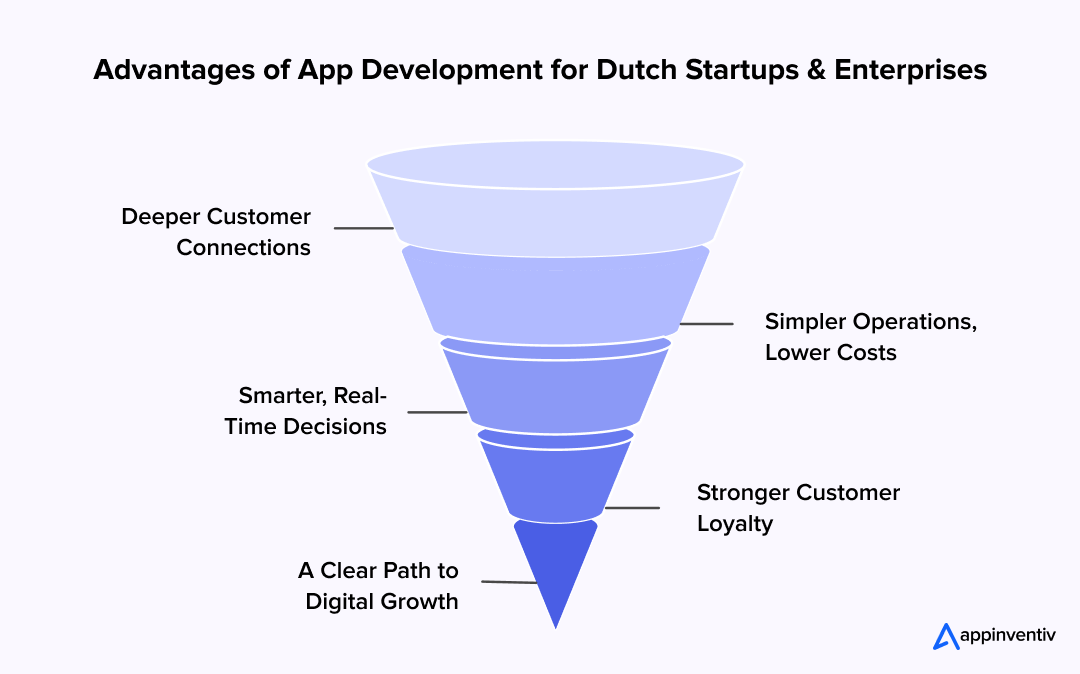
1. Deeper Customer Connections
Dutch users spend a large share of their digital time on mobile devices. Having an app means your business is right where your audience is. Features like notifications, chat support, and quick-access tools make interactions more personal and convenient.
For startups, it’s a chance to build relationships early; for large enterprises, it’s a way to retain customers through consistent, on-the-go engagement.
2. Simpler Operations, Lower Costs
A custom mobile application in the Netherlands often ends up doing far more behind the scenes than anyone expects. Retailers check stock from their phones instead of walking back and forth. Logistics staff watch deliveries move across the map in real time. Service businesses confirm bookings or payments without paperwork or follow-up calls.
These small improvements stack up. Over months, they reduce manual effort and cut operating costs; a big reason many Dutch companies fold their apps into broader automation and sustainability plans.
3. Smarter, Real-Time Decisions
Apps create lots of data. From purchase behavior to usage frequency, every interaction reveals something valuable. With advanced AI analytics integrated into the mobile apps, companies can track what works, spot problems early, and adapt quickly.
Instead of making decisions on instinct, teams operate with clearer insight into what’s happening right now.
4. Stronger Customer Loyalty
Consistency keeps users coming back. A reliable app with smooth navigation and timely updates builds credibility over time. When your customers know your app works whenever they need it, they stay loyal, not out of habit, but because it makes their lives easier.
5. A Clear Path to Digital Growth
Across the Netherlands, mobile technology is powering a wave of digital transformation for businesses. From healthcare startups to energy enterprises, companies use apps to automate, connect, and scale faster than ever before.
With a thoughtful app development lifecycle in the Netherlands, even smaller teams can bring innovation to market quickly, validate ideas, and grow sustainably.
What’s Hot in App Development Right Now: Emerging Tech Trends for Dutch Businesses
Mobile apps have changed dramatically in the past few years. New technologies appear faster than most teams can adopt them, and the ones leading the race aren’t doing it with traditional development alone. AI, machine learning, AR/VR, 5G, and blockchain are now shaping how ambitious Dutch businesses build their next-gen apps; not as buzzwords, but as essential building blocks. Here’s what developers are actually eyeing in 2026.
AI Makes Apps Think
Remember when apps just sat there doing nothing? Those days are over. Artificial intelligence in app development now turns apps into thinking machines that get better the more you use them.
Example: Netflix knows exactly what show you want to binge next. Spotify builds playlists that feel like your best friend made them. Customer service bots actually help instead of frustrating you. Your phone understands when you mumble commands at it.
This isn’t magic – it’s AI learning your habits and preferences.
ML Gets Creepy Good at Predictions
While AI handles the thinking, Machine Learning apps dig through mountains of data looking for patterns. It’s basically a digital detective that never sleeps.
Example: Amazon somehow knows you need toilet paper before you do. Your banking app catches fraudsters faster than human security teams. Google Photos recognizes your dog better than some relatives do.
ML algorithms eat data for breakfast and spit out scary-accurate predictions.
5G Finally Lives Up to the Hype
After years of promises, 5G networks in mobile apps actually deliver ridiculous speeds. Apps that crawled before now sprint.
Example: Twitch streams look crystal clear in the middle of nowhere. Mobile games rival console quality without burning through your battery. Smart home apps respond instantly instead of making you wait.
Speed matters, and 5G delivers it.
AR and VR Stop Being Gimmicks
Augmented and Virtual Reality in app development have finally found their groove. Instead of weird tech demos, we’re getting useful apps people actually want.
Example: IKEA lets you plop virtual furniture in your living room. VR fitness apps transport you to scenic bike routes while you pedal nowhere. Medical students dissect 3D hearts floating in mid-air.
The technology has matured enough to solve real problems.

Blockchain Does Something Useful
Past the crypto hype, blockchain technology in mobile applications quietly makes them more secure. It’s not just about digital money anymore.
Example: Medical records become tamper-proof. Supply chains track products from factory to doorstep. Financial apps process payments without traditional banking delays.
The distributed ledger concept works when applied thoughtfully.
Cloud Services Run Everything
Physical servers feel ancient now. Amazon Web Services, Google Cloud, and Microsoft Azure handle the heavy lifting while developers focus on building cool features.
Apps scale from hundreds to millions of users without breaking. Storage costs drop dramatically. Uptime becomes someone else’s problem.
The cloud revolution succeeded because it just works better.
How Appinventiv Can Help Dutch Startups and Enterprises Build Secure & Scalable Mobile Apps
Building a mobile app in the Netherlands requires more than good code. It calls for an understanding of market behavior, compliance, and user expectations. Appinventiv bridges that gap by combining deep regional insight with a decade of app development experience across Europe.
Our team of 1600+ tech experts has successfully completed 300+ projects across the UK and Europe, serving clients in 35+ industry verticals with an impressive 97% client satisfaction rate. Backed by 5+ innovation hubs in London, Berlin, and Amsterdam, our teams collaborate closely with businesses across the continent to create secure and scalable applications that drive measurable results.
We also hold globally recognized certifications such as:
- ISO 27001 for Information Security Management
- CMMI Level 3 for process maturity and quality assurance
Our work has earned multiple recognitions, including the Deloitte Fast 50 India Award and placement among APAC’s High-Growth Companies. This reflects our commitment to innovation and delivery excellence.
We cover the complete mobile app development lifecycle in the Netherlands, from strategy and design to development and launch. We also offer ongoing mobile app maintenance in the Netherlands to keep products optimized through updates, bug fixes, and new features.
- Looking to launch a startup mobile app? We’ll help you move from idea to MVP with confidence.
- Scaling an enterprise platform? Our team ensures performance, compliance, and security at every level.
- Need long-term support? Our ongoing mobile app maintenance services keep your product future-ready.
Our partnerships speak for themselves. For instance, we have worked with some of the world’s leading enterprises and startups such as Adidas, Edamama, KFC, Pizza Hut, Edfundo and Soniphi, helping them redefine customer experience.
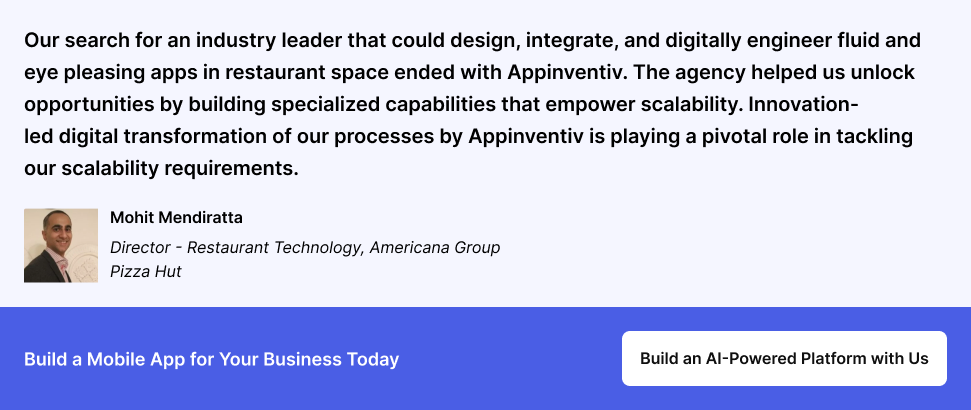
If you are still unsure about our app development expertise in the Netherlands, here is a case in point:
Success Story: Optimizing Logistics Through Mobile Transformation
Challenge: A mid-sized logistics company in Rotterdam partnered with us to modernize its delivery management system. The firm used to rely heavily on manual updates, which slowed down communication and increased operational delays.
Solution: We built a custom mobile application for the client with route tracking, predictive scheduling, and real-time alerts on a cloud-based infrastructure. The results within six months were transformative:
- 45% boost in operational efficiency via automation
- 38% reduction in manual data-entry errors
- 60% faster response times to customer queries
- 1,200+ daily active users within the first quarter of launch
These results underline how mobile app development in the Netherlands can transform everyday business operations into digital growth engines.
Let’s discuss your mobile app vision today and turn it into a secure, scalable, and high-performing reality.
FAQs
Q. What are the key stages in the mobile app development process in the Netherlands?
A. The mobile app development process in the Netherlands typically follows eight main stages:
- Discovery & Research
- Strategy & Planning
- UI/UX Design
- Development
- Testing
- Launch
- Maintenance and Scaling
To gain an in-depth understanding of these steps, please refer to the above blog.
Q. How long does mobile application development take?
A. The timelines depend on complexity, but most Dutch projects follow this general pattern:
- Simple apps: 4–6 months
- Moderately complex apps: 6–9 months
- Enterprise or custom mobile applications: 9–12+ months
Q. Should I choose native or cross-platform for my app in the Netherlands?
A. Both approaches of mobile app development in the Netherlands have merit; it depends on your goals.
If you aims of the best performance, security, and smooth user experience, native mobile app development is the best choice. It is ideal for long-term, feature-rich projects targeting iOS or Android separately.
Cross-platform development (Flutter, React Native) is well suited for startups and SMEs that want to reach both platforms faster and at lower cost. Maintenance is simpler, and updates roll out simultaneously across devices.
Q. What mobile technologies are trending in the Netherlands?
A. The Dutch app ecosystem is highly tech-forward. Current trends include:
- Flutter for fast cross-platform builds
- React Native for startups focused on flexibility
- Swift for native iOS apps
- Kotlin for Android projects
Growing use of AI, chatbots, and IoT in retail, health, and logistics
Q. How do I publish my app on App Store and Google Play for the Dutch market?
A. Here’s a simple process to publish your app on Google Play and App Store:
- Prepare your listings
- Set up developer accounts
- Meet platform guidelines and GDPR rules.
- Submit the app, run store validation tests, and provide metadata.
- Use Dutch keywords and visuals to improve visibility for ASO
- Monitor ratings, respond to reviews, and update regularly.
Q. How do I ensure my app complies with Dutch data protection (AVG/GDPR) regulations?
A. Compliance starts at design, not after launch.
- Collect only essential data and get explicit user consent.
- Offer transparent privacy policies written in plain Dutch or English.
- Store data on EU-based or GDPR-compliant servers.
- Encrypt all sensitive user information during storage and transfer.
- Allow users to access or delete their data easily.
- Conduct regular audits to meet mobile app security Netherlands standards.
Partnering with developers familiar with Dutch AVG (Algemene Verordening Gegevensbescherming) ensures your custom mobile application in the Netherlands meets every legal benchmark.
Q. What should I look for when selecting a mobile app development partner in the Netherlands?
A. When choosing the right partner is crucial, you should consider the following:
- Experience: Look for a proven portfolio in your industry or similar markets.
- Transparency: A good firm provides clear pricing, timelines, and communication.
- Security focus: Ask about data protection, code audits, and GDPR experience.
- Maintenance and support: Ongoing mobile app maintenance ensures stability post-launch.
- Cultural understanding: Local insight helps with UI/UX decisions and Dutch localization.


- In just 2 mins you will get a response
- Your idea is 100% protected by our Non Disclosure Agreement.

Unlocking the Cost of Building a Community Platform Like Qatar Living: What to Expect
Key takeaways: Building a community platform is a business decision first and a technology project second. A strong MVP in Qatar typically starts around QAR 109,200–QAR 254,800, while full-scale platforms move into the QAR 2,184,000+ range based on scale and ambition. Success comes from solving daily user problems, not from copying features. Cost is driven…
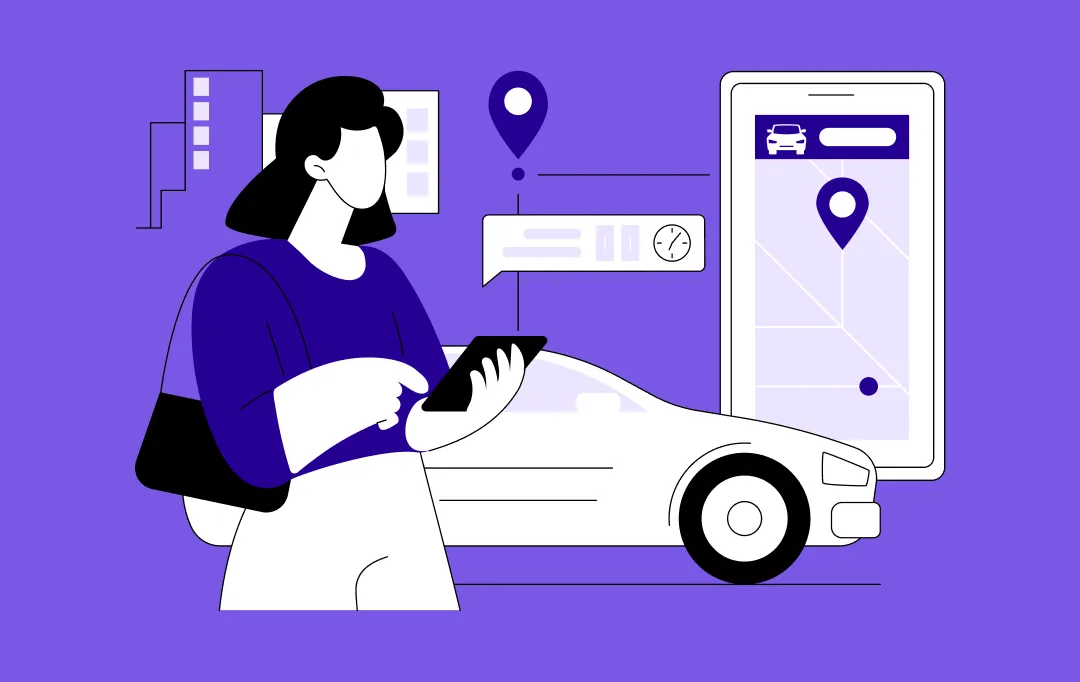
How to Build a Taxi Booking App in Australia: Process, Features, and Costs
Key takeaways: Australia’s shift toward app-based transport is growing fast, making this the right time for businesses to build scalable taxi booking platforms. A successful taxi app in Australia depends on strong compliance, real-time accuracy, and a modular backend that supports multi-city operations. Payments, GST-ready pricing, safety workflows, and state-wise licensing must be built into…

English-Arabic App Development: Key Business Challenges and How to Solve Them
Key takeaways: Localization is More Than Translation: Success in MENA requires adapting to RTL design, regional dialects, and cultural nuances, not just translating text. Strategic Localization is Key: Tailoring the app experience for MENA means choosing the right dialects, optimizing RTL navigation, and ensuring cultural relevance. Real-World Success Stories: Companies like Careem and Anghami succeeded…

